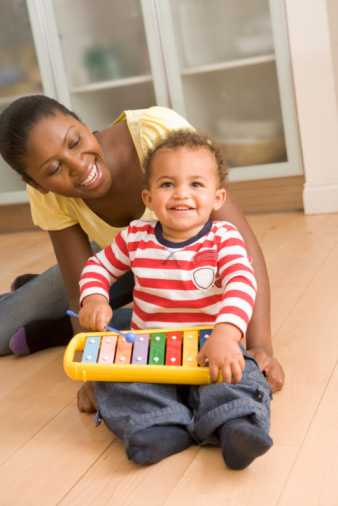Building Blocks of Structure

It’s normal for young children to test the limits. That’s how they learn what is right and wrong. But, it can be frustrating and really test our patience as parents! One way to keep control and help children learn is to create structure. Structure is created by consistent routines and rules. Rules teach children what behaviors are okay and not okay. Routines teach children what to expect throughout the day. Structure helps children learn responsibility and self-control.
There are three key ingredients to building structure in the home:
Consistency – doing the same thing every time
Predictability – expecting or knowing what is going to happen
Follow-through – enforcing the consequence
What are these things? How can you use them in your family?
Consistency – doing the same thing every time
Consistency means that you respond to your child’s behavior the same way every time. You respond the same no matter what is going on or how you’re feeling. Misbehaviors are less likely to occur again if you always use the same consequence, like ignoring or time-out. Good behaviors are likely to be repeated if you let your child know you like them. This doesn’t mean that you need to give consistent attention to ALL of your child’s behaviors. Think about something you want your child to do more often. This could be sharing, cleaning up, or following directions. To increase those behaviors, praise them each time you see them occur. Your consistent response will help those behaviors happen more often.
Examples
Example 1: You use time-out at home and at the grocery store every time your child hits her sister. You do this even when you are tired from a stressful day at work.
Example 2: You praise your child each time he shares with a new friend while playing. You do this even if you are busy with something else and need to make a special effort to praise him.
Predictability – expecting or knowing what is going to happen
Predictability means your child knows what will happen and how you will respond. When your daily routines are predictable, your child knows what to expect for the day. When your rules are predictable, your child knows how you will react to her behavior.
Examples
Example 1: Your child knows that if she hits a friend while playing, she will go to time-out every time.
Example 2: Your child knows certain steps are followed each night at bedtime, such as taking a bath, brushing teeth, reading a story, getting into bed, and turning off the lights.
Example 3: Your child knows that if he follows directions while running errands with you, he will get a special reward. The reward could be an activity with you or a trip to the park.
Example 4: Your child knows that if she plays quietly each time you are on the phone, you will let her know how happy you are with her behavior once you finish talking.
Follow-through – enforcing the consequence
Following through means that you do what you say you will do in response to your child’s behaviors. This is often called the “say what you mean and mean what you say.” If you tell your child a behavior will be punished, you punish it every time it happens. If you tell your child he will be rewarded for a behavior, you give him the reward after he has done what you asked. To be consistent and predictable, we need to follow through. Follow-through is important for ALL behaviors. This includes behaviors we like and don’t like.
Examples
Example 1: You have a house rule that hitting results in a time-out. When you see your child hitting her sibling, the hitting is stopped. Your child is taken immediately to time-out.
Example 2: Your child does not follow your direction, and you give a warning that he will lose playtime if he doesn’t follow your direction. Your child still doesn’t do what you directed. He loses playtime.
Example 3: If you promise your child a treat for staying in the shopping cart in the grocery store, your child knows he will get a treat from the candy or toy machine on the way out of the store.
How do consistency, predictability, and follow-through help create structure?
A structure that helps your child learn to behave has routines and rules that are consistent, predictable, and have follow through. There is a basic routine you follow and rules you live by on most days of the week. You set appropriate expectations and limits for your child’s behaviors. Your child learns how you are going to respond to behaviors that are okay or not okay.
Structure helps parents and their kids. Kids feel safe and secure because they know what to expect. Parents feel confident because they know how to respond, and they respond the same way each time. Routines and rules help structure the home and make life more predictable.
When can you start creating structure with routines and rules?
Creating structure at any age can help your child and you. Children can begin learning routines and rules at a very young age. You can begin with routines for important activities of the day, like meals, bedtime, or in the morning. Or you can use routines to help your child learn important behaviors, like getting dressed. Click here for tips on making routines and rules for your family.
Click here to view examples of family routines »
- Page last reviewed: May 19, 2014
- Page last updated: May 19, 2014
- Content source:


 ShareCompartir
ShareCompartir